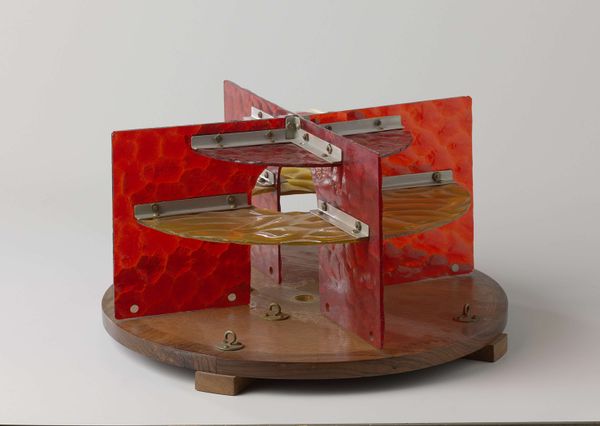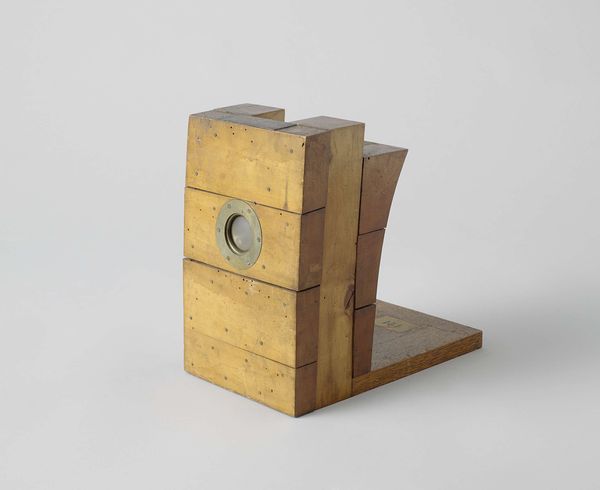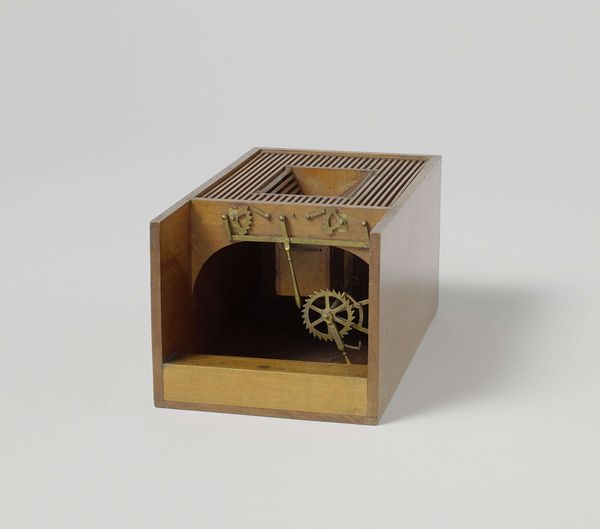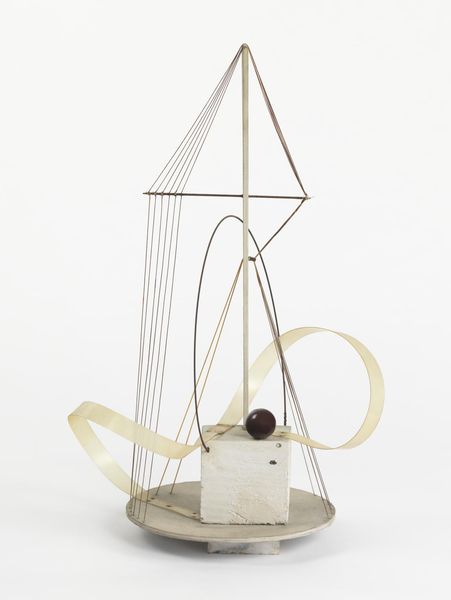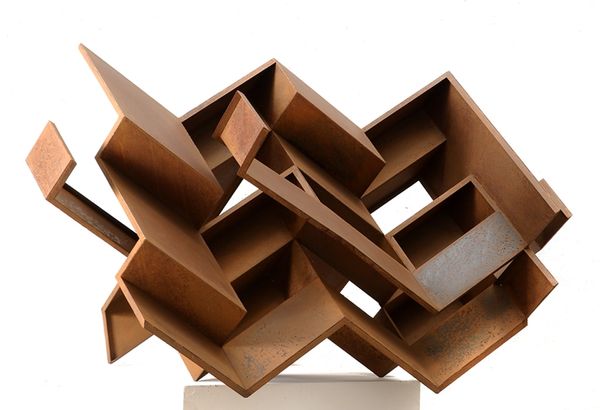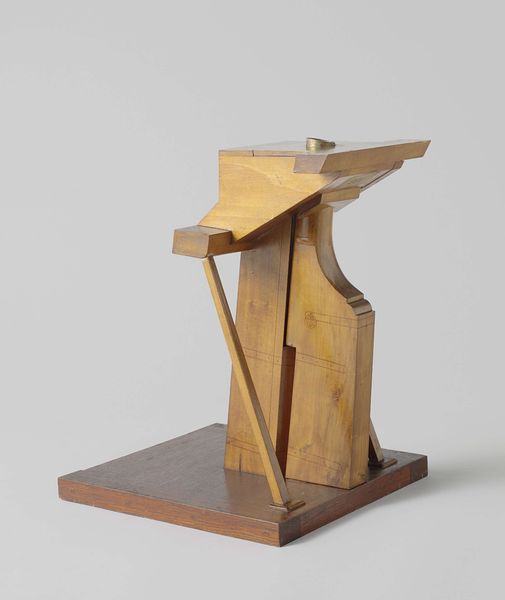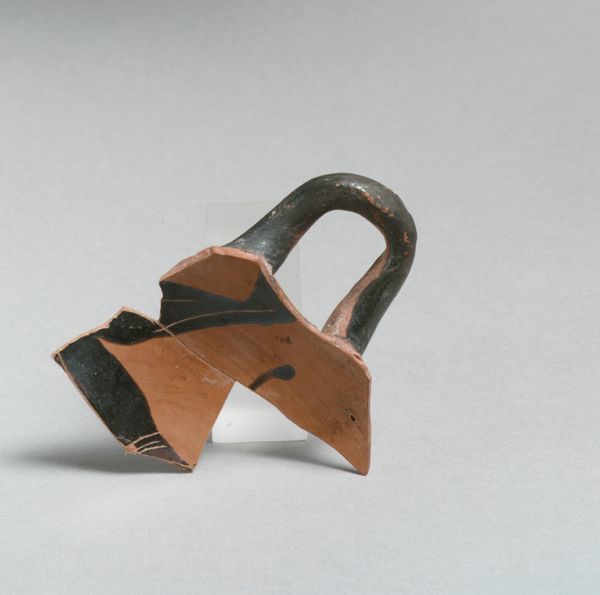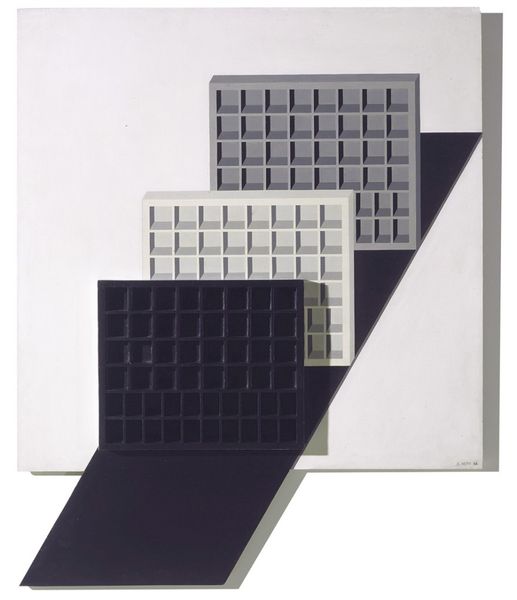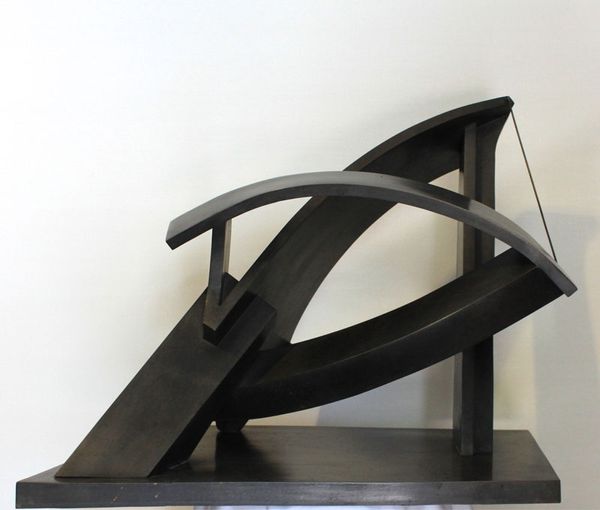
metal, sculpture, wood
#
portrait
#
cubism
#
metal
#
geometric
#
sculpture
#
abstraction
#
wood
#
cutout
Copyright: Public domain US
Editor: We're looking at Henri Laurens' "Head of a Woman" from 1915, crafted from wood and metal. It's so angular and abstract; it barely resembles a face. What do you see in this piece, beyond the obvious geometry? Curator: Beyond geometry, eh? Well, first, imagine yourself in 1915, on the precipice of… everything. Laurens isn't just making a sculpture, he’s wrestling with representation itself. That layering, those contrasting materials, they speak to a fractured, multifaceted modern identity. I feel a tension, almost a quiet rebellion against traditional portraiture. Don’t you think? Editor: I see that push and pull, definitely. It’s like he’s taken a portrait and smashed it into pieces, then carefully reassembled it, but with different rules. Do you think the choice of wood and metal says something specific? Curator: Absolutely! The warmth of the wood – that organic, almost comforting element – is juxtaposed with the cold, industrial feel of the metal. Perhaps hinting at the eroding warmth and organic lifestyle of pre-war society, about to be overwhelmed by the industrial war machine. How does the geometric structure make *you* feel? Editor: A bit disoriented, but in an exciting way, almost as if trying to view this head from multiple perspectives at once. There is still that feeling of elegance from a "traditional" piece, though, that catches my attention. Curator: Precisely. It's a dance between destruction and reconstruction, isn't it? It tickles your mind, that's what I adore about it. Laurens took tradition by the scruff of the neck and then whispered secrets in its ear. Editor: Definitely! I hadn't thought about the societal implications as deeply before, now I think it brings an entirely different feel to the piece. Curator: See? That's the fun part about art; it's never really just *there*. It calls you, whispers to you if you're listening. It offers glimpses of our histories.
Comments
No comments
Be the first to comment and join the conversation on the ultimate creative platform.
